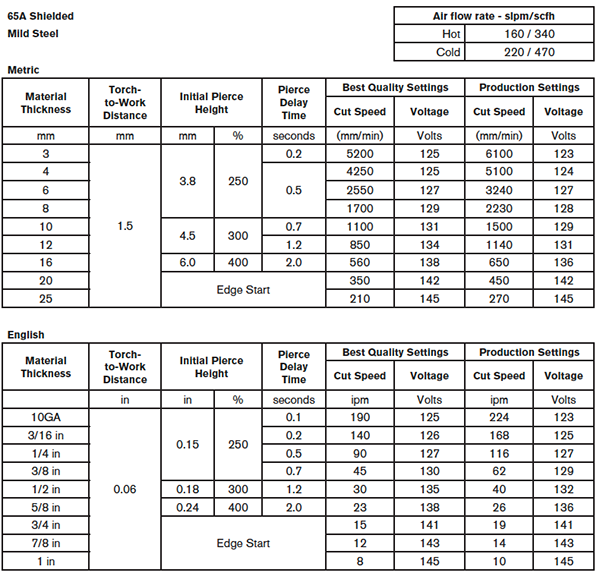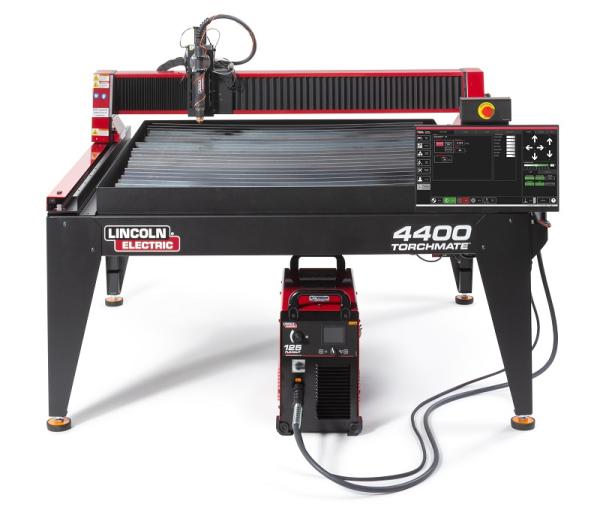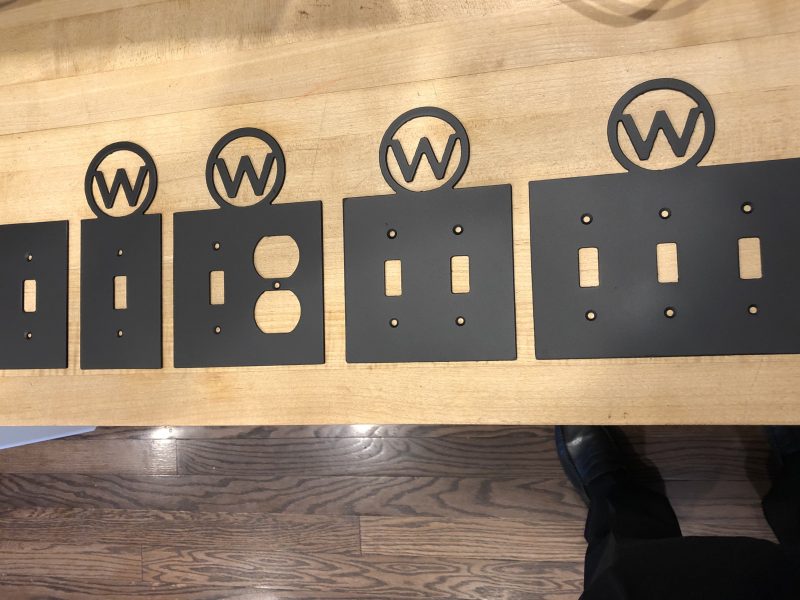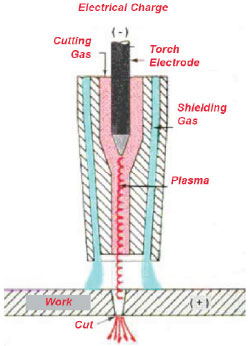Table of Contents
CNC plasma cutting is a popular technique used in the manufacturing industry for precise and efficient cutting of metal sheets. However, one question that often arises is whether the speed of CNC plasma cutting affects the angularity of the cut. Angularity refers to the angle at which the cut is made, and if it is not precise, it can affect the quality and accuracy of the final product.
In this article, we will explore the relationship between CNC plasma cutting speed and angularity. We will look at the factors that affect angularity, the impact of cutting speed on angularity, and how to achieve the best possible angularity in CNC plasma cutting. So, let’s dive in and discover the fascinating world of CNC plasma cutting and angularity.
Does CNC Plasma Cutting Speed Affect Angularity?
Yes, CNC plasma cutting speed can affect the angularity of the cut. When the cutting speed is too high, it can cause the plasma arc to lag behind, resulting in a beveled edge. On the other hand, when the cutting speed is too slow, it can cause dross buildup and rough edges. Therefore, it is important to find the optimal cutting speed for the material being cut to maintain the desired angularity.
Does CNC Plasma Cutting Speed Affect Angularity?
CNC plasma cutting is a widely used method for cutting metal sheets of different thicknesses. It involves using a plasma torch to melt the metal and then blowing away the molten metal with compressed air. CNC plasma cutting is known for its precision, speed, and versatility. However, there is a debate about whether CNC plasma cutting speed affects the angularity of the cut. In this article, we will explore this topic in detail.
Understanding Angularity in CNC Plasma Cutting
Angularity is a measure of how accurately the cut angle matches the desired angle. In CNC plasma cutting, angularity is an important factor because it affects the quality of the cut and the fit of the parts. If the angularity is not correct, it can lead to problems such as gaps between the parts or parts that do not fit together properly.
The angularity of a CNC plasma cut depends on various factors such as the thickness of the material, the type of plasma torch used, the cutting speed, and the angle of the torch. The cutting speed is one of the critical factors that affect angularity.
How Cutting Speed Affects Angularity
The cutting speed is the rate at which the plasma torch moves along the material. The higher the cutting speed, the faster the torch moves, and the more material it can cut in a given time. However, cutting speed also affects the angularity of the cut.
When the cutting speed is high, the plasma arc can become unstable, leading to irregularities in the cut. This can result in a cut that is not straight and has jagged edges. Additionally, the heat from the plasma torch can cause the material to warp, further affecting the angularity of the cut.
On the other hand, when the cutting speed is too low, the quality of the cut can suffer, and the edges can become rough and uneven. The material can also overheat, leading to deformation and affecting the angularity of the cut.
Finding the Optimal Cutting Speed
Finding the optimal cutting speed for CNC plasma cutting is a balancing act. The cutting speed needs to be fast enough to increase productivity while maintaining the quality of the cut. It is essential to find the right balance between cutting speed and angularity.
The optimal cutting speed depends on various factors such as the thickness of the material, the type of plasma torch used, and the desired accuracy of the cut. It is important to test different cutting speeds to find the one that produces the best results.
Benefits of CNC Plasma Cutting
CNC plasma cutting offers several benefits over other cutting methods. It is a fast, precise, and cost-effective way to cut metal sheets of different thicknesses. It is also versatile, and the same machine can be used for cutting a wide range of materials such as aluminum, stainless steel, and copper.
CNC plasma cutting is also highly automated, and the machine can be programmed to cut complex shapes and designs accurately. This makes it an ideal option for industries such as automotive, aerospace, and construction.
CNC Plasma Cutting vs. Other Cutting Methods
CNC plasma cutting offers several advantages over other cutting methods such as laser cutting and waterjet cutting. It is faster than waterjet cutting and can cut thicker materials than laser cutting. It is also more cost-effective than both methods.
However, laser cutting offers better precision and can cut through a wider range of materials. Waterjet cutting is ideal for cutting materials that are sensitive to heat and can produce smoother edges than plasma cutting.
Conclusion
In conclusion, the cutting speed does affect the angularity of the cut in CNC plasma cutting. It is essential to find the optimal cutting speed that balances productivity and quality. CNC plasma cutting offers several benefits over other cutting methods and is a versatile and cost-effective option for cutting metal sheets of different thicknesses. By understanding the factors that affect the quality of the cut, it is possible to achieve accurate and precise cuts with CNC plasma cutting.
Frequently Asked Questions
Below are some frequently asked questions about CNC plasma cutting speed and its effect on angularity.
Does CNC Plasma Cutting Speed Affect Angularity?
Yes, the speed at which you cut using a CNC plasma cutter can have an impact on the angularity of the cut. The reason for this is that the faster you cut, the more heat is generated, which can cause the metal to warp or bend. This can result in a cut that is not as precise as it should be, leading to issues with the overall quality of the finished product.
However, it’s important to note that the impact of cutting speed on angularity will vary depending on a number of factors, including the thickness and type of metal being cut, the type of plasma cutter being used, and the skill level of the operator. Therefore, it’s important to experiment with different cutting speeds and observe the results to determine the optimal speed for your specific cutting needs.
What is the Optimal Cutting Speed for CNC Plasma Cutting?
The optimal cutting speed for CNC plasma cutting will depend on a number of factors, including the type and thickness of metal being cut, as well as the type of plasma cutter being used. In general, a slower cutting speed is recommended for thicker metals, as this will help to minimize any warping or bending that may occur during the cutting process.
However, it’s important to balance cutting speed with other factors, such as the desired level of precision and the amount of time available for the cutting process. Ultimately, the optimal cutting speed will vary depending on the specific project and the needs of the operator.
What Other Factors Affect Angularity in CNC Plasma Cutting?
In addition to cutting speed, a number of other factors can affect the angularity of cuts made using a CNC plasma cutter. These include the type and quality of the plasma cutter being used, the thickness and type of metal being cut, and the skill level of the operator.
To ensure the highest level of precision and quality in your cuts, it’s important to use high-quality equipment, select the appropriate cutting speed, and carefully monitor the cutting process to make any necessary adjustments. With practice and experience, you can minimize the impact of these factors and achieve consistently high-quality results.
How Can I Improve Angularity in CNC Plasma Cutting?
To improve angularity in CNC plasma cutting, it’s important to take a number of steps, including selecting the right cutting speed, using high-quality equipment, and carefully monitoring the cutting process. In addition, it may be helpful to experiment with different techniques and cutting methods to determine the optimal approach for your specific needs.
Finally, it’s important to invest time and effort in training and practice to improve your skills and knowledge of CNC plasma cutting. With experience and dedication, you can achieve consistently high-quality results and minimize any issues with angularity or precision in your cuts.
What Are Some Common Issues with Angularity in CNC Plasma Cutting?
Some common issues with angularity in CNC plasma cutting include warping, bending, and distortion of the metal being cut. These issues can occur due to a number of factors, including cutting speed, equipment quality, and operator skill.
To address these issues, it’s important to carefully monitor the cutting process and make any necessary adjustments to speed, technique, or equipment as needed. Additionally, investing in high-quality equipment and training can help to minimize these issues and improve the overall quality of your cuts.
In conclusion, the speed of CNC plasma cutting does have an impact on the angularity of the cut. The faster the cutting speed, the more likely it is for the angularity to be affected. This is because high cutting speeds can cause the plasma arc to deviate from its intended path, resulting in a less precise cut.
However, it is important to note that the effect of cutting speed on angularity can be mitigated by using the right cutting parameters and techniques. By adjusting the cutting speed, gas flow, and torch height, operators can achieve a balance between speed and accuracy, ensuring that angularity is not compromised.
In summary, while cutting speed does play a role in the angularity of CNC plasma cuts, it is not the only factor at play. With proper technique and parameter adjustment, operators can achieve both speed and accuracy in their plasma cutting operations.
Request a quote today!
[contact-form-7 id="1578" title="Contact form"]
Please compress the file into a ZIP or RAR file before uploading. Alternatively, send through your RFQ by email.
enquires@unitymanufacture.com





